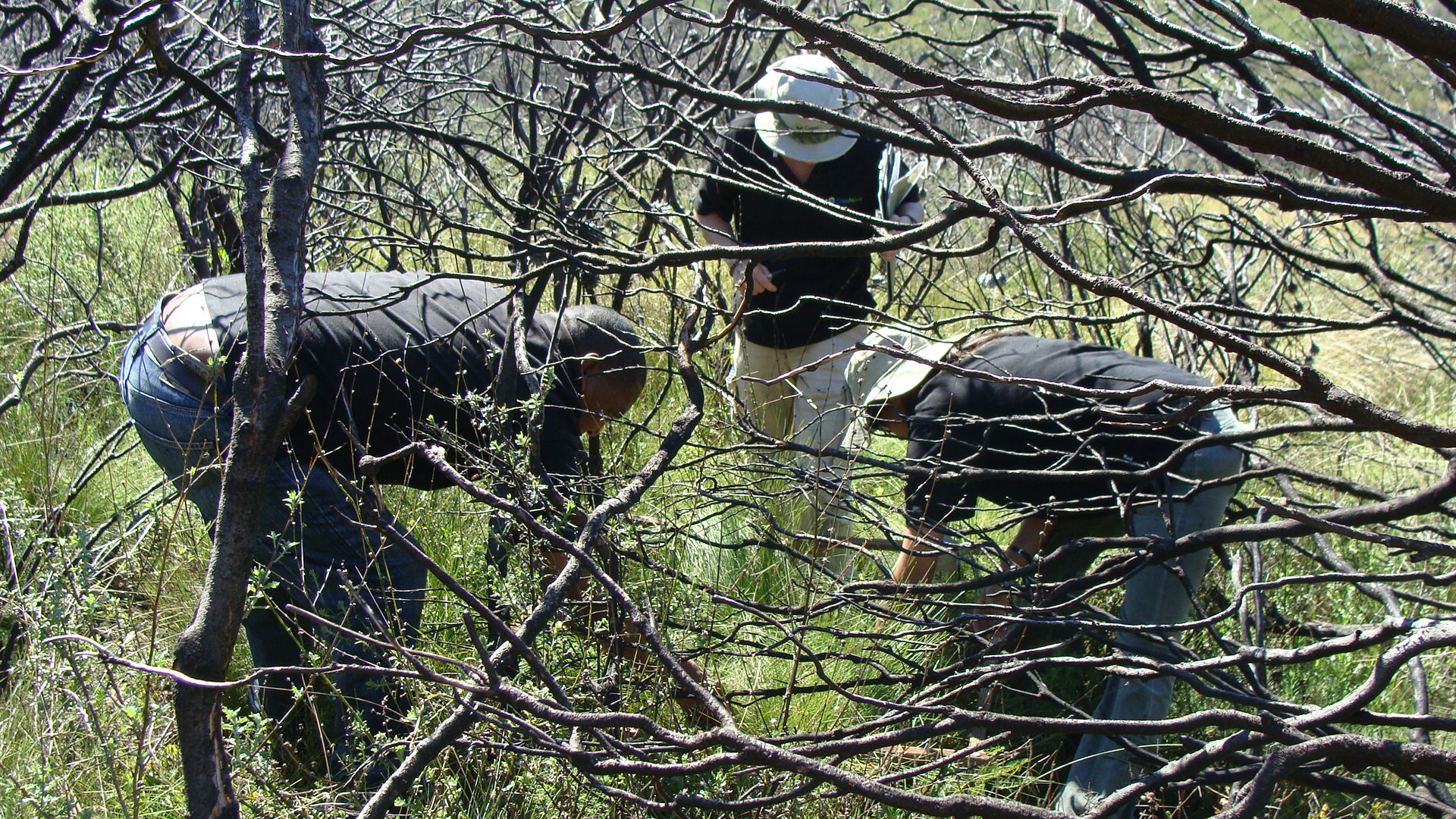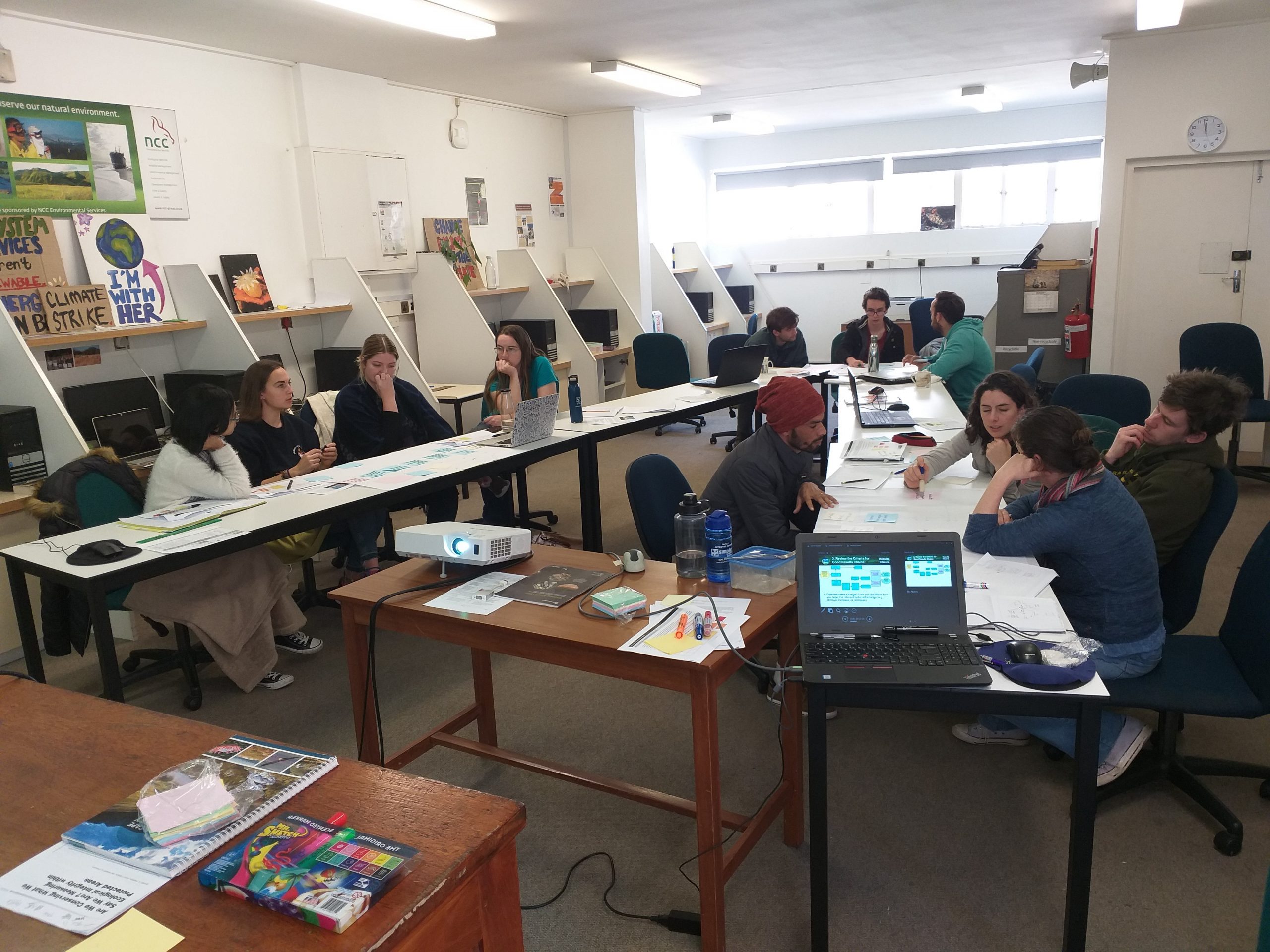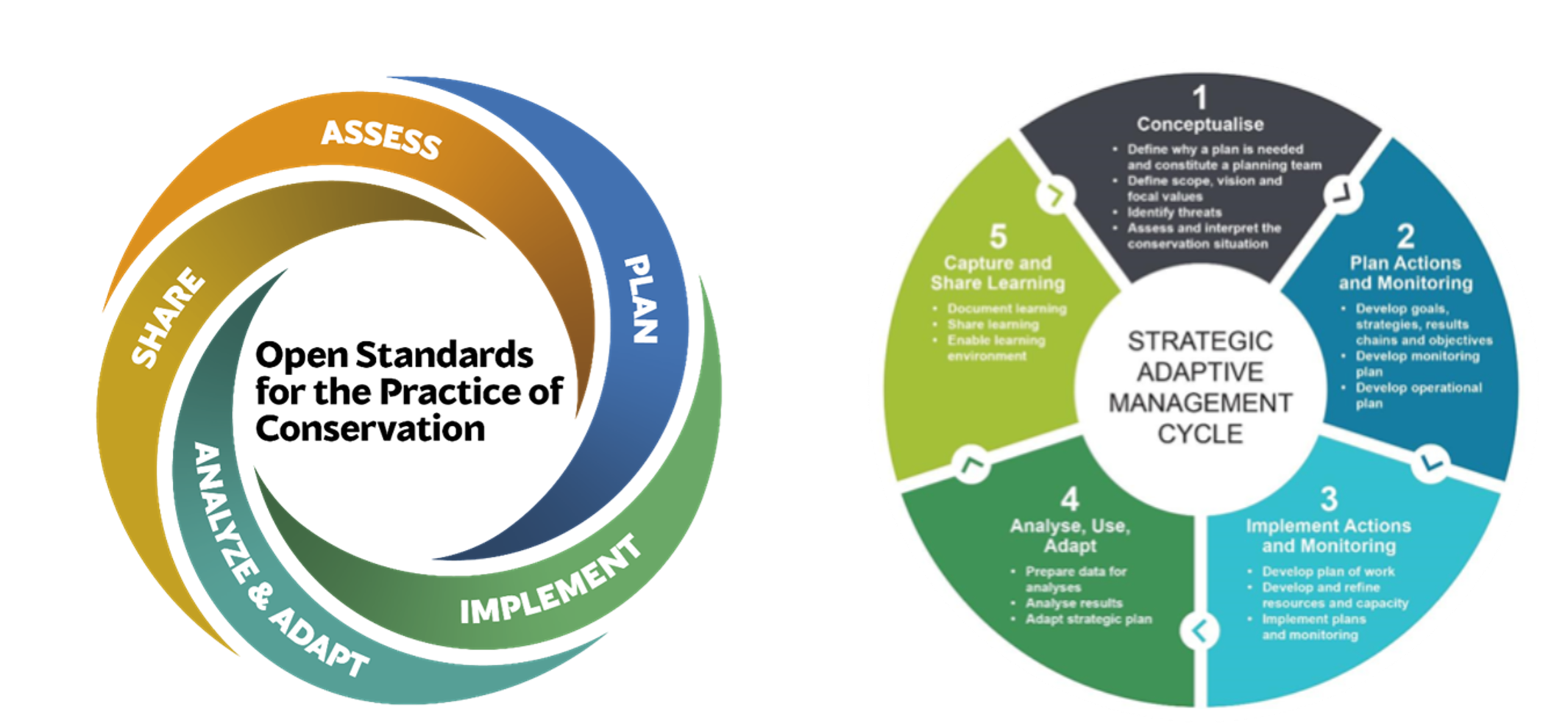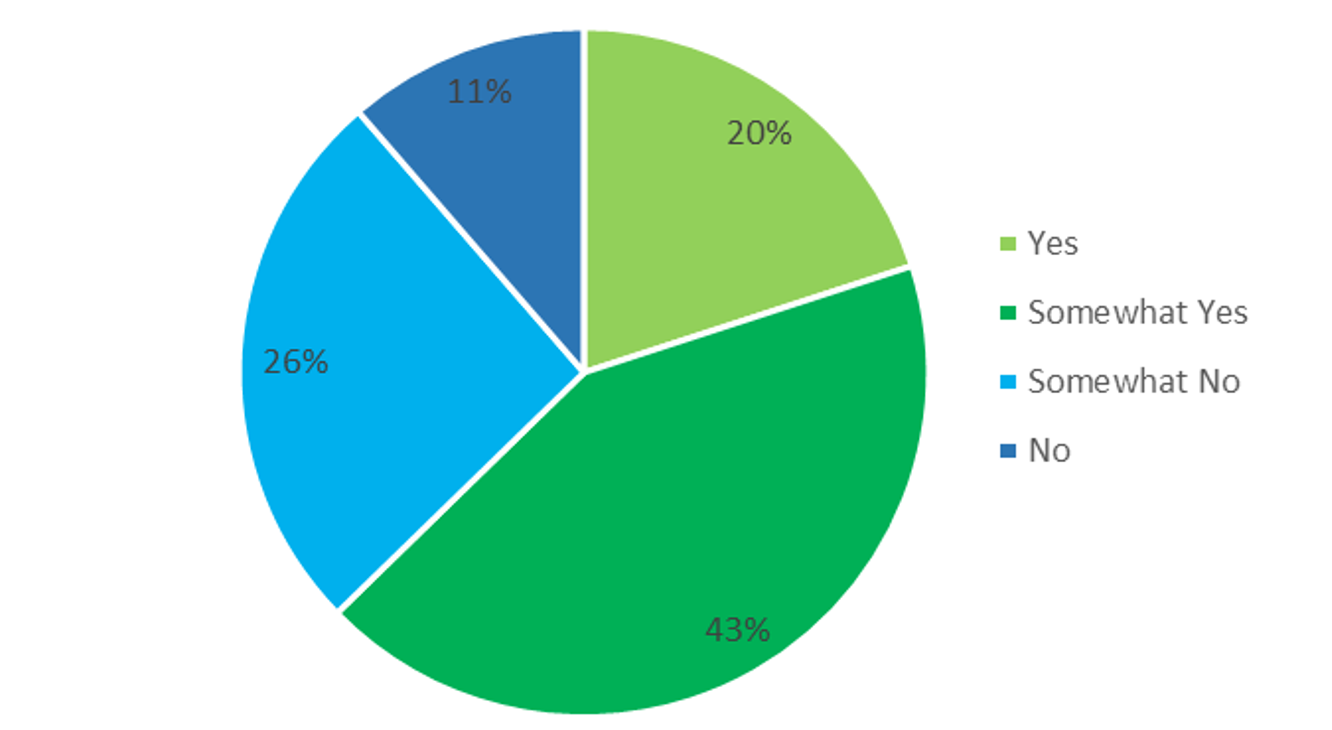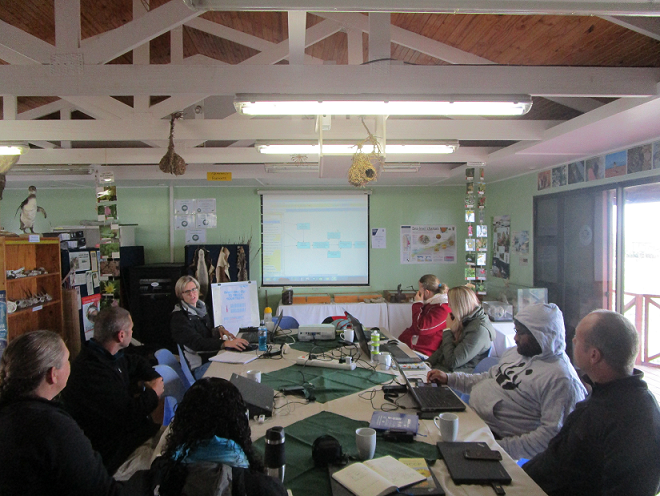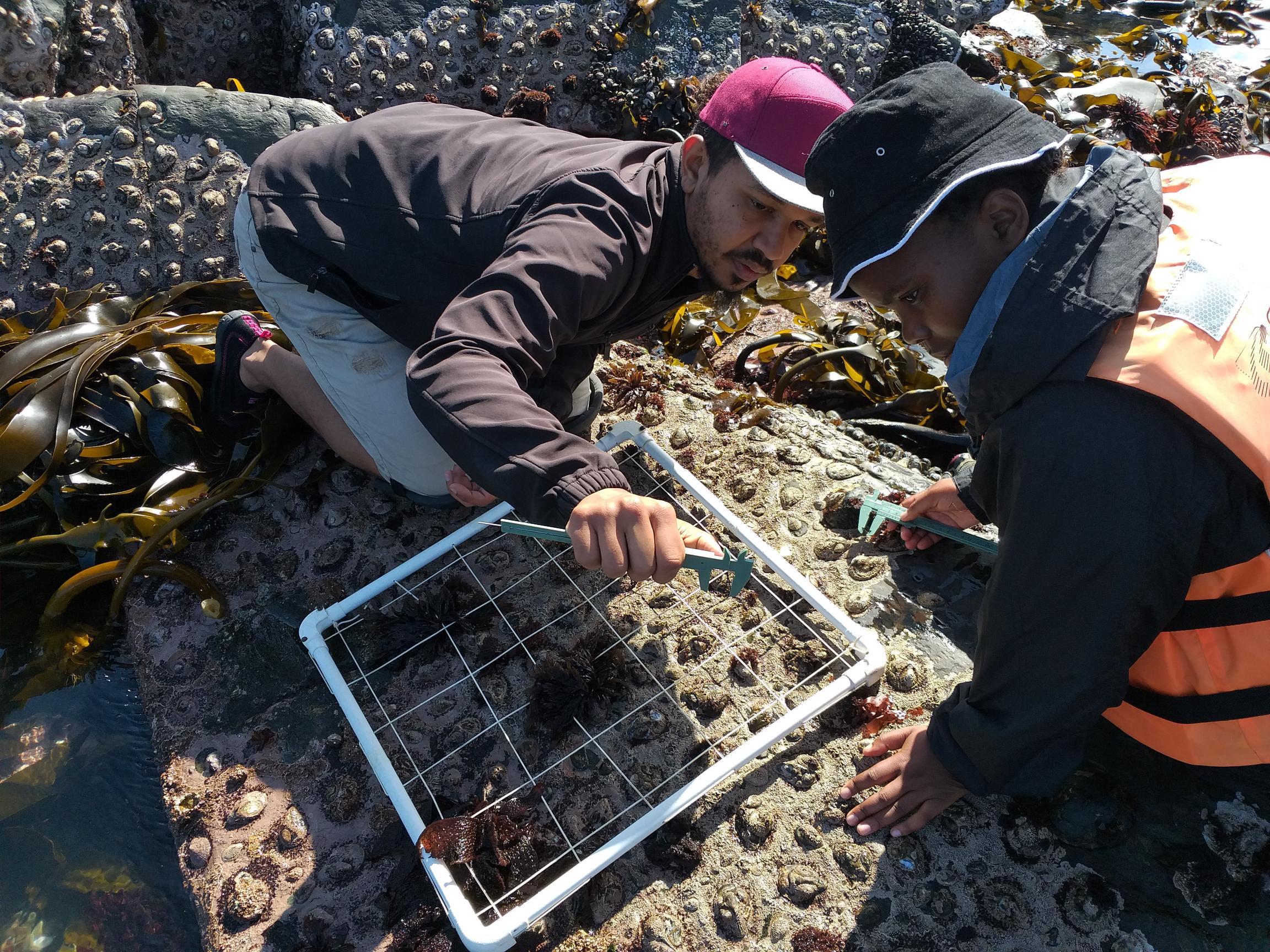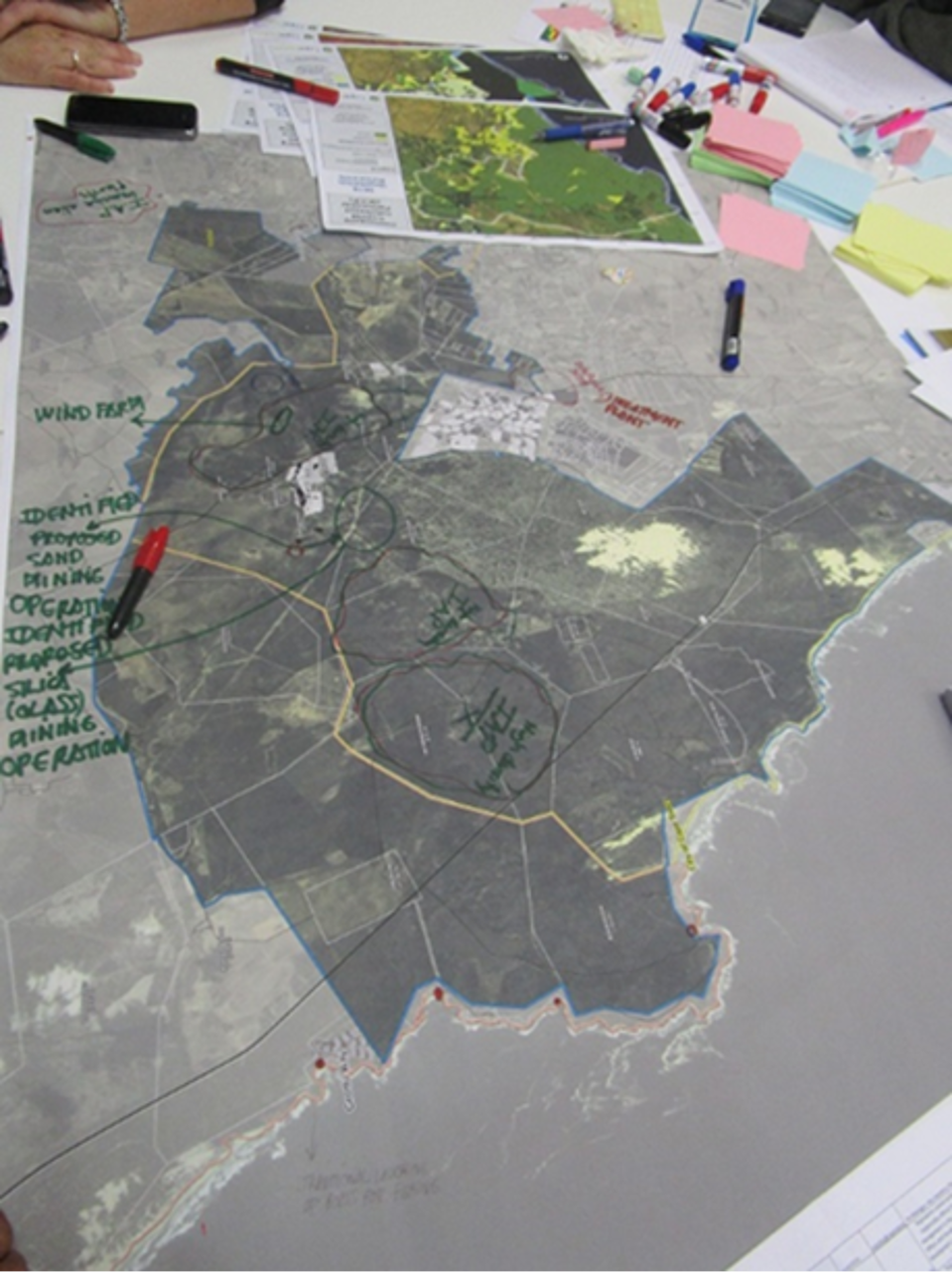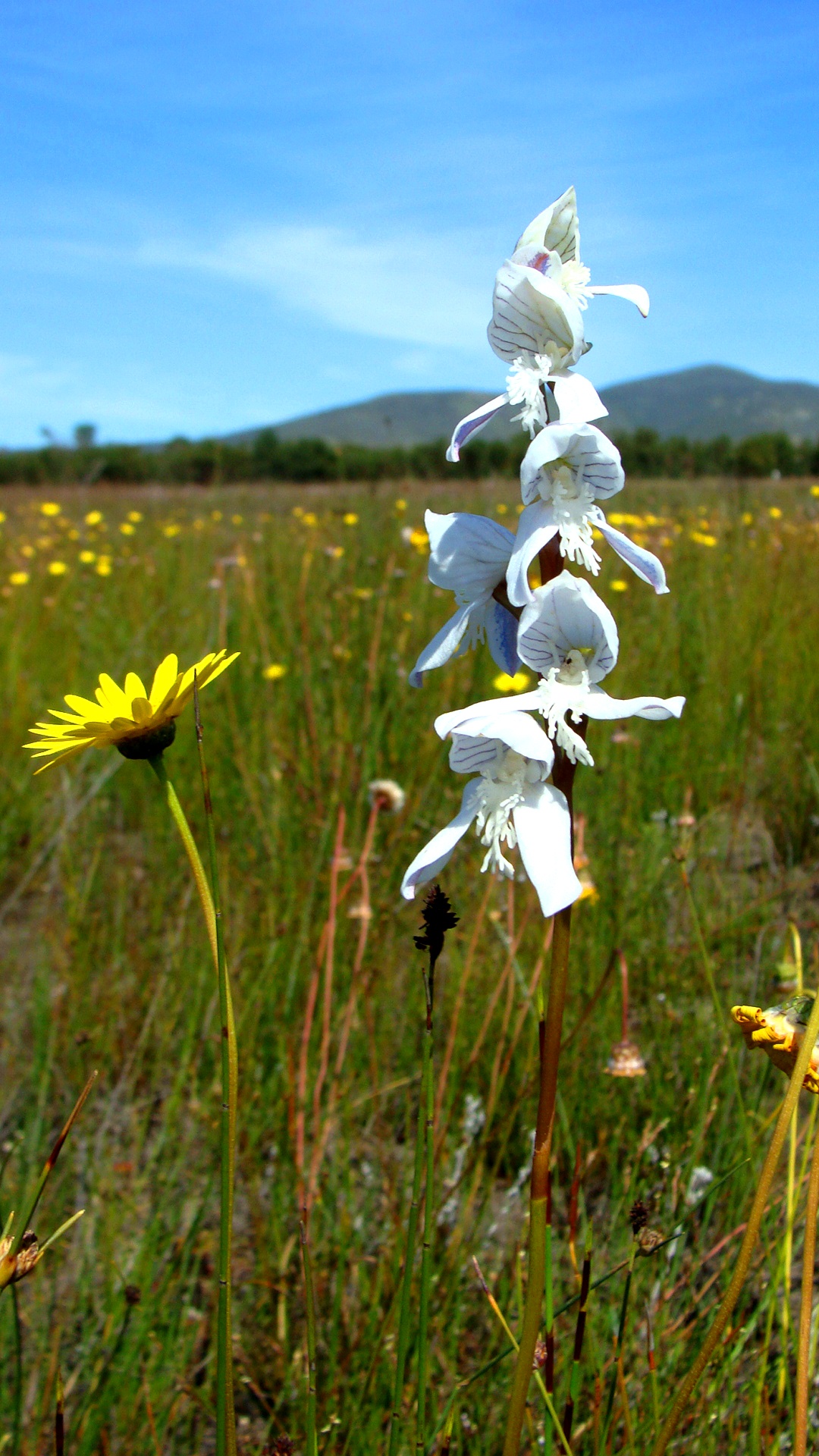Photo Credit: Sheila Henning, CapeNature
Institutionalising the Conservation Standards in a Parastatal South Africa
Case Study Protected Area Management: Institutionalising the Conservation Standards in a Parastatal South Africa
HASHTAG #Managinguncertaintycertainly
by Natalie Hayward | Conservation Operations, CapeNature
CapeNature, the conservation authority for the Western Cape Province, South Africa, initiated a process in 2017 to strengthen adaptive management of the protected areas under its management. Management plans strive for adaptive management, yet few are structured in a way that enables the adaptive management cycle to function fully. To facilitate adaptive management, the planning process must be founded upon clearly articulated goals and measures of success. The GEF-5 Protected Area Project, Improving the Management Effectiveness of the Protected Areas Network, presented an opportunity for CapeNature to pilot the application of the Conservation Standards, a strategic adaptive management framework designed to help conservation teams achieve lasting impact.
The Conservation Standards (CS) are a widely adopted set of principles and practices drawn from several fields, that bring together common concepts, approaches, and terminology for conservation project design, management, and monitoring. Developed by the Conservation Measures Partnership and regularly updated in collaboration with the broader community, the CS is an open-source, strategic systematic process (source: conservationstandards.org/about/). The CS facilitates planning for, and implementation of, adaptive management through common language, capacity building, stakeholder engagement, the articulation of clear goals and objectives, and developing clear linkages between strategic intent, the conservation situation, strategies, and monitoring and evaluation.
The specific aim of improving how protected area management plans were developed, was to enable CapeNature and its managers to better measure effectiveness and success of its protected areas and adapt management strategies over time. CapeNature and the Endangered Wildlife Trust are currently the only conservation agencies in South Africa that have formally adopted the Conservation Standards.
SETTING THE SCENE: Protected Area Management in CapeNature
CapeNature manages 39 protected area complexes comprising 107 nature reserves and six marine protected areas, totaling approximately 835 089.97 hectares. Protected areas are situated in marine and coastal environments, rural rangelands, lowlands (largely transformed through agriculture and human settlement), and mountain catchment areas (important for water provision and other large-scale ecological processes). Some protected areas are isolated while others border human settlements and urban areas. Like protected areas managers around the world, CapeNature management also grapple with adequate resourcing and financing, adequate representativity of ecosystems and species, managing the balance of resource use and visitor demand, and managing threats ranging from invasive species to unnatural ecological processes to informal human settlement in protected areas. As such, planning for effective management requires participatory adaptive management under a common vision and strategic intent.
You can’t manage what you can’t measure, which means that you can’t know whether you are successful, unless success is defined and tracked.
Peter Drucker
ADAPTIVE MANAGEMENT FRAMEWORK: Why the Conservation Standards
As the authority for conservation related matters and regulation in the Western Cape Province, South Africa, CapeNature is accountable for the biodiversity it is mandated to manage. Therefore, CapeNature’s ability to account for the state of biodiversity within its protected areas is based on an understanding of the contribution of each individual protected area to the protected areas network locally, regionally, and nationally, and importantly, the condition of the biodiversity contained within each protected area. Healthy biodiversity means that ecological processes are functional, where associated ecosystem services flow from protected areas for the benefit of nature and human wellbeing. Healthy biodiversity also means that CapeNature is doing its part as a conservation agency in South Africa by contributing positively to the Convention on Biological Diversity’s Aichi targets.
To establish how well existing planning frameworks were set up to facilitate adaptive management, protected area management effectiveness was evaluated against protected area management plans, operational plans, and state of biodiversity reports. The evaluation highlighted a misalignment or indefinite link between management intent, operational plans, monitoring programmes and state of biodiversity reports. The articulation of protected area values and threats between protected areas required a consistent approach and alignment to IUCN Best Practice. Links between conservation outcomes, protected area values, management intent and monitoring required strengthening.
It became clear that a systematic strategic approach with common language and methodology was required to strengthen links and develop measures of success directly linked to goals and objectives and strategies. It was also evident that a systematic approach and credible methodology would improve buy-in and support from stakeholders. CapeNature required a framework to plan for outcomes in a way that protected area managers could measure impact. CapeNature required a planning process that would enable protected area management teams to measure how well the protected area is being managed, and primarily the extent to which the protected area was protecting values and achieving goals and objectives.
The application of the Conservation Standards greatly facilitated overcoming the challenge of misalignment or vague linkages. It also facilitated the development of technical support instruments for data management and reporting, strengthening the capacity of CapeNature’s planning teams in adaptive management, facilitated improved participatory processes with key stakeholders, and building stronger links between protected area values and human wellbeing.
As CapeNature grows in the institutionalisation of the Conservation Standards, it is envisaged that the knowledge management system will evolve resulting in improved reporting capability and traceability between budget allocation and actions, a result of management actions and condition of values. Management effectiveness and the way in which it is measured will improve, while management can with certainty, differentiate between the ‘must have’ projects and the ‘nice to have’ projects. The Conservation Standards have helped management teams design monitoring and evaluation requirements for impact, using limited resources.
PLANNING PILOT: ‘First date’ with the Conservation Standards
CapeNature recognised that its protected area planning and adaptive management framework could be improved. The Conservation Standards required testing to evaluate whether the framework would suite CapeNature’s context and the legal framework governing protected area management. The GEF-5 PA Project provided an opportunity to test the Conservation Standards in a critical climate change corridor and landscape with multiple stakeholders requiring a strategic plan to achieve conservation and local economic objectives. The Conservation Standards was thus piloted in the Dassenberg Coastal Catchment Partnership (DCCP).
The planning pilot aimed:
- To pilot the Conservation Standards.
- To capacitate conservation practitioners (CapeNature, partners and stakeholders) in the use of the logic framework that illustrates the connectedness of steps and activities in the adaptive management cycle, from planning to operationalisation to monitoring and evaluation, feedback, revision and adapting.
- To advocate a critical thought process about what requires management, why management is required, with whom management should take place, in response to system drivers and threats.
- To introduce a logic framework that operationalises a vision or desired state.
The planning pilot team called upon the Conservation Coaches Network, a global community of trained professional coaches, for volunteers to help facilitate the pilot and coach participants through the process. The planning pilot team’s mission was to apply the conservation standards to the DCCP to demonstrate the value of the framework, capacitate participants though application and develop strategic actions for the DCCP.
The pilot demonstrated the value of the Conservation Standards as a strategic framework for adaptive management. As a result, CapeNature adopted the adaptive management framework as the basis for protected area planning and management in 2017. Nine management plans have been developed to date using the Conservation Standards adaptive management framework.
INSTITUTIONALISATION OF THE CONSERVATION STANDARDS: Where is CapeNature now?
The traditional phases on institutionalisation are awareness, experimentation, expansion, consolidation, and maturity. CapeNature is deemed to be in the expansion phase. Indicators of Conservation Standards institutionalisation lie in the existence of institutional frameworks to house or support the Standards, the existence of knowledge management systems to support consistent production of data and preparation of reports, and adequate resources (financial and human) and infrastructure capacity to produce and adapt. The institutional framework mandated by CapeNature for the application of the Conservation Standards lies in:
- Adoption of the Conservation Standards and associated guidelines by CapeNature’s Board. See Figures A and B.
- Protected area legal framework and management planning guidelines.
- Management Effectiveness coordination and support function.
- Landscape Intelligence Units whose function is planning, decision support, capacity building and management of the science – management interface.
- Adaption of protected area management plan templates and guidelines for stakeholder engagement; Miradi software licenses.
An audit of adaptive management capability within CapeNature indicated that generally the capability for adaptive management exists. Areas of improvement include financial and human resource capacity to implement planning and management at the appropriate scales. See Figure C.
As CapeNature grows through the expansion phase, a knowledge management system is in the process of being developed to align to the Conservation Standards and accommodate the outputs of the planning process and facilitate operational planning, data management, monitoring and reporting.
The vision for the consolidation phase is a library of the protected areas and their values, key attributes, threats, and key actions, whereby access to data will facilitate an analysis of the condition of protected area values and thus the state of protected areas across the protected areas network.
Institutionalisation is a sequence of events leading to ‘new practices becoming standard practices.
Yin, 2017
INSTITUTIONALISATION OF THE CONSERVATION STANDARDS: Benefits and next steps
Benefits
The greatest impact of the Conservation Standards is consistency, articulating protected area values and their condition, and the identification of measures of success at the onset of planning.
The process facilitates a clear definition of what must be conserved / protected / managed, i.e. protected area values. The process facilitates an assessment of current condition of values, and their desired state. As such, goals and objectives and strategies are directly linked to protected area values. Management effectiveness is linked to adaptive management which is linked to goals that are linked to protected area values and their condition.
Scientists and protected area managers cannot know everything, and the Conservation Standards makes it possible to manage uncertainty. The process clarifies what management teams do not know.
Stakeholder engagement and understanding of what CapeNature is working to achieve is improved resulting in greater buy-in and support. The planning methodology has improved participation and accountability by support components within the organisation, facilitating greater commitment and delivering greater functionality to these management plans.
Next steps
CapeNature’s focus areas to achieve consolidation and maturity is the alignment of monitoring and evaluation programmes to protected area values and key attributes, and the refinement of the knowledge management system as a platform for implementation for protected area management plans, analysis, review, and adapting, and documenting and sharing learning.
LESSONS LEARNT
Agencies are unique and there is no one generic recipe that fits all when trialing, adopting, and institutionalising new processes. Based on lessons learnt, CapeNature’s recipe was as follows:
- Seek and articulate the agency ‘why’: Management effectiveness analysis organisationally indicated that CapeNature’s protected area planning processes and plans did not easily facilitate and track the measurement of conservation outcomes. Closer alignment to IUCN World Commission on Protected Areas and Green List Standards was also sought.
- Test organisational readiness and determine if the climate is suitable for testing and taking up new ideas and processes: The Director: Conservation Operations recognised the need to shift to outcomes-based thinking and ensured the necessary support and accountability during the early phases of awareness and experimentation.
- Have a clear Vision: A future where the condition of protected area values could be accounted for at site level and across the protected areas network.
- Find an ‘on-ramp’. The DCCP required strategic direction and the GEF-5 PA project provided the financial injection to enable the pilot and solicit volunteer Conservation Coaches to help capacitate staff and stakeholders whilst facilitating the DCCP planning pilot.
- Use a pilot as an opportunity to demonstrate and capacitate others while doing: Benefits of the process and stakeholder engagements, planning pilot workshop surveys, protected area management progress and outcomes of capacity building events were demonstrated and communicated regularly to senior management, the Executive and CapeNature’s Board.
- Mandate / formalise the process as soon as there is buy-in: Executive Director: Conservation Operations and Board formally adopted the Conservation Standards. Relevant guidelines and templates were updated to align to the Conservation Standards and IUCN principles.
- Human resources: Invest in people in terms of warm bodies, developing capability and expertise: Internal capacity building interventions were undertaken, key staff underwent formal Conservation Coach training, and a core team has been established to address Monitoring and Evaluation alignment.
- Invest finances in tools, software and systems, and skills development: Miradi software licenses were obtained for key staff and a new data management system is under development.
- Expect resistance, seek to understand why there is resistance, and develop a strategy to overcome resistance.
- Persevere
Management effectiveness is defined as how well a protected area is being managed, and primarily the extent to which the protected area is protecting values and achieving goals and objectives. Management effectiveness of protected areas managed by CapeNature and as an outcome of the GEF-5 PA Project, Improving the Management Effectiveness of the Protected Areas Network, is a key focus area for the organisation. The GEF-5 PA project enabled CapeNature to achieve a point where strategic adaptive management can be applied to its protected areas. The GEF-5 PA project presented the opportunity to trial and demonstrate a new methodology and process that is foundational to the application of strategic adaptive management. The outcome was the adoption of the Conservation Standards in CapeNature and the successful drafting of several Protected Area Management Plans using the Standards.
Download document
CapeNature Case Study
Download CS
The Conservation Standards is the product of inputs, field tests, and discussions among members of the Conservation Measures Partnership (CMP), which has final editorial authority over the Conservation Standards. Substantial input was also provided by members of the Conservation Coaches Network (CCNet) and other CMP partners.
Photo Credit: Felix Cybulla
Support CS
The biodiversity conservation community is tackling large, complex, and urgent environmental problems where the stakes are high. However, we don’t have a fully functional system to assess the effectiveness of our actions. Without more rigorous measurement of effectiveness and disciplined recording of our efforts, we cannot know or demonstrate that we are achieving desired results.
Photo Credit: Felix Cybulla
Our Collaborators
Every organization, agency, project, and individual has its own preferred set of terms. There is no right answer – the most important thing is that the members of your project team and the people with whom you work have a clear and common understanding of whatever terms you choose to use.
Photo Credit: Chris Scarffe
Contact Us
To inquire about supporting Conservation Standards (CS) or for general inquiries, please contact us at CMPinfo@ConservationMeasures.org
Photo Credit: Nature Conservancy of Canada

